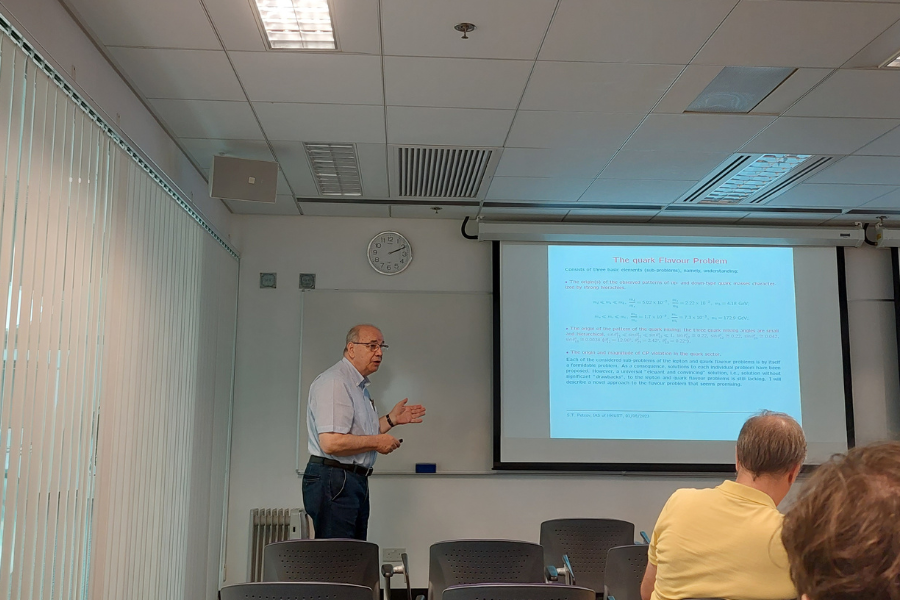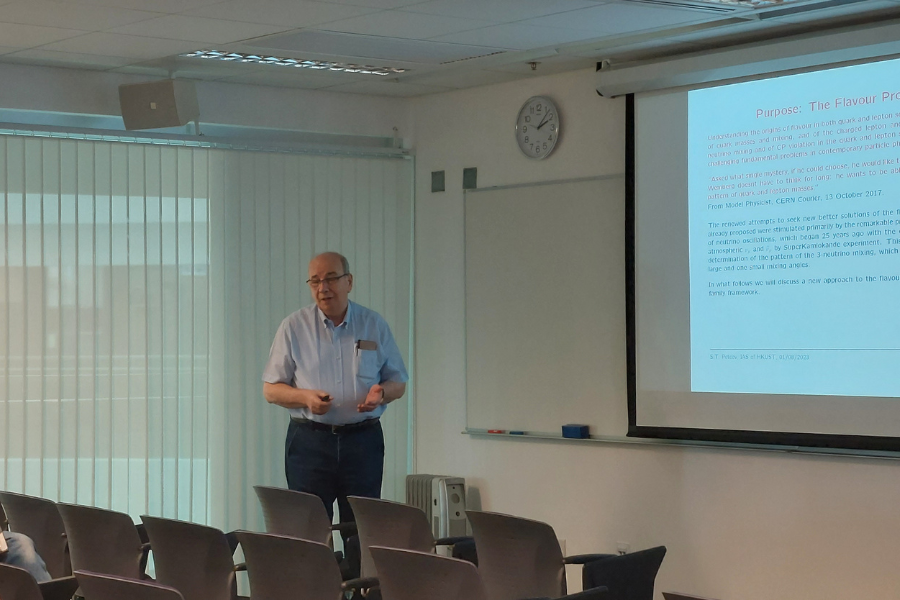Modular Invariance Approach to the Flavour Problem
Abstract
The approach to the flavour problem based on modular invariance will be reviewed. More specifically, the following aspects of the approach will be discussed: i) the general setting, ii) the modular forms, which are an integral part of the approach, iii) the problem of CP violation, iv) examples of models of lepton flavour, their phenomenology and experimental tests, v) approximate residual symmetries and their possible relation to the fermion mass hierarchies, vi) the problem of modulus stabilisation, vii) outlook.
About the Speaker
Prof. Petcov completed his PhD at Laboratory of Theoretical Physics, Joint Institute of Nuclear Research, Dubna, USSR, in 1977 and became a Professor at SISSA, Trieste, Italy, in 1994. Prof. Petcov has won the Pontecorvo Prize for the year 2010 for “Fundamental contribution to the investigation of neutrino propagation in matter, µ → e + γ, μ → 3e processes and Majorana properties of neutrinos” (that is awarded annually since 1995 by the Joint Institute for Nuclear Research (JINR) in Dubna, Moscow, Russia). He has contributed in the fields of neutrino, elementary particle and astrophysicle physics, such as proposing (with D.R.T. JONES) in 1979 the Vector Boson Fusion (VBF) mechanism of Higgs boson production in e+ – e- collisions, which was later extended by other authors to p – p collisions (about (7-10)\% of the Higgs bosons are produced at LHC via the VBF mechanism). He also discovered (with S.M. BILENKY and J. HOSEK) in 1980 a new source of CP violation (CPV) in particle physics – the Majorana phases of the lepton mixing matrix. In 2001 he proposed (with his student M. PIAI) a novel method of neutrino mass ordering (spectrum) determination using reactor neutrinos, which led to the construction of JUNO experiment in China which is based on this method. He discovered in 1998 a new mechanism of resonance-like (maximal) enhancement (at small mixing angles) of the transitions between electron and muon (tauon) neutrinos crossing the Earth core (neutrino oscillation length resonance (NOLR) or Earth mantle-core enhancement), which can be used in the future high statistics experiments studying atmospheric neutrino oscillations (IceCube-PINGU, KM3NET-ORCA, DUNE, HK) to get information about the Earth density structure and the properties (density, composition) of the Earth core (via neutrino oscillation tomography of the Earth).
About the Program
For more information, please refer to the program website at http://iasprogram.ust.hk/particle_theory.
For Attendees' Attention
-
Seating is on a first come, first served basis.






